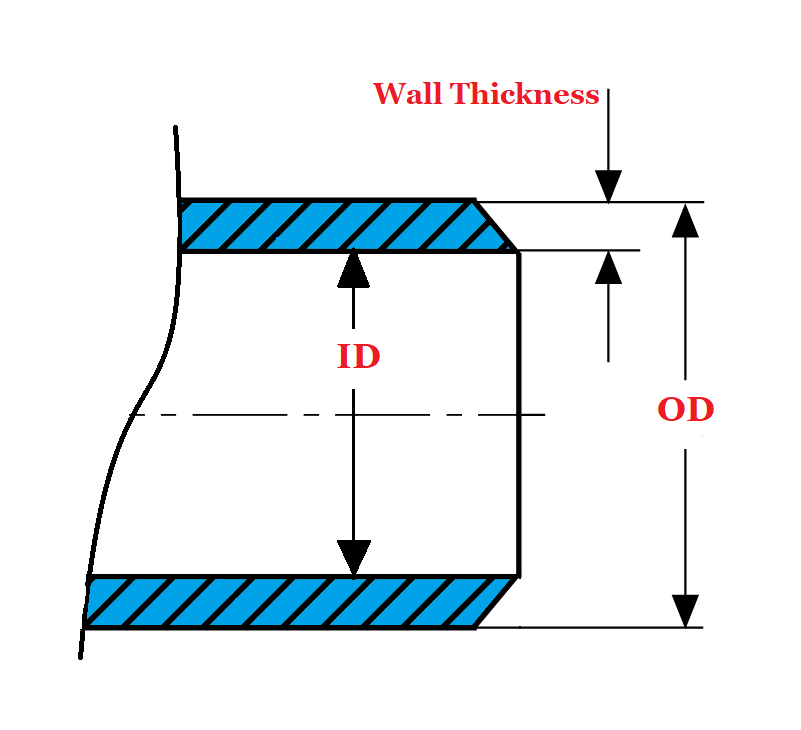

When selecting steel pipe for your application, one of the most important choices you’ll face is seamless vs welded. Each type has distinct manufacturing methods, strengths, and cost implications, making them better suited for different use cases.
Understanding the pros and cons of seamless and welded seam steel pipe can help ensure your system is safe, efficient, and cost-effective.
What’s the Difference?
Seamless Pipe
Seamless pipe is manufactured without a weld seam. It is formed by extruding or piercing a solid billet of steel, then elongating and sizing it into a pipe shape.
Welded Pipe
Welded pipe is produced by rolling a flat steel plate or strip into a cylindrical shape and then welding the seam, either longitudinally or helically.
Key Comparison Table
| Feature | Seamless Pipe | Welded Pipe |
|---|---|---|
| Manufacturing Process | Hot extrusion or piercing | Rolled and welded from strip or plate |
| Seam | None | Weld seam present |
| Strength | Uniform strength throughout | Slightly weaker at the weld seam |
| Pressure Rating | Higher (especially in thin walls) | Lower in high-pressure applications |
| Availability | Limited to smaller sizes | Wide range of diameters and wall thicknesses |
| Cost | More expensive | More affordable |
| Inspection | Not required for seams | Weld seam must be tested (X-ray, ultrasonic, etc.) |
| Lead Time | Longer | Shorter, more readily available |
Advantages of Seamless Pipe
-
Superior Pressure Capacity
-
Seamless pipe is often stronger and better suited for high-pressure, high-temperature applications, especially in oil & gas and power generation.
-
-
Uniform Structure
-
Since there’s no welded seam, the pipe has consistent strength and integrity along its entire length.
-
-
Fewer Defects
-
Ideal for applications requiring clean internal and external surfaces, such as boilers, heat exchangers, and hydraulics.
-
-
Preferred in Critical Systems
-
Often specified in ASME, ASTM, and API standards for critical or hazardous environments.
-
Disadvantages of Seamless Pipe
-
Higher Cost
-
Seamless pipe is significantly more expensive to manufacture, especially in larger diameters.
-
-
Limited Size Availability
-
Most seamless pipes are available up to 24” in diameter. Larger sizes are rare and costly.
-
-
Longer Lead Times
-
Because of the complex manufacturing process, seamless pipe may have slower production and delivery timelines.
-
Advantages of Welded Pipe
-
Lower Cost
-
Welded pipe is generally less expensive than seamless, making it ideal for non-critical applications or large projects.
-
-
Wider Range of Sizes
-
Easier to produce in larger diameters (up to 100”+), long lengths, and a variety of wall thicknesses.
-
-
Faster Production
-
Shorter lead times and better availability in both standard and custom lengths.
-
-
Good for Structural Use
-
Common in construction, water lines, scaffolding, and fencing, where ultra-high pressure isn’t a concern.
-
Disadvantages of Welded Pipe
-
Weaker at the Weld Seam
-
The seam can be a weak point under pressure or stress. However, modern welding techniques and testing reduce this risk significantly.
-
-
Weld Inspection Required
-
Welded pipes for critical applications must undergo non-destructive testing (like ultrasonic or radiographic testing) to verify seam quality.
-
-
Slightly Less Smooth Internally
-
Some welded pipes may have minor internal beads or weld flash, which can affect flow in sensitive applications.
-
When to Use Each Type
| Application | Recommended Pipe Type |
|---|---|
| High-pressure steam or gas | Seamless |
| Oil and gas transmission | Seamless |
| Structural supports or frames | Welded |
| Water distribution | Welded |
| Boiler tubes or heat exchangers | Seamless |
| General plumbing or construction | Welded |
| Chemical processing under pressure | Seamless |
Final Thoughts
Both seamless and welded steel pipes serve vital roles across industries. The best choice depends on your pressure requirements, budget, size needs, and code specifications.
-
Choose seamless pipe when performance, pressure tolerance, and safety are critical.
-
Choose welded pipe when cost-efficiency and size flexibility are more important.
Always consider standards like ASTM A53, A106, API 5L, and ASME B31.3 when selecting the right type for your application.

